Wiring Best Practices
Wiring Rules
| DANGER | |
|---|---|
The following rules must be applied when wiring the TM5 System:
-
I/O and communication wiring must be kept separate from the power wiring. Route these 2 types of wiring in separate cable ducting.
-
Verify that the operating conditions and environment are within the specification values.
-
Use proper wire sizes to meet voltage and current requirements.
-
Use copper conductors only.
-
In the case of TM5 Safety-related I/O modules:
-
Use twisted pair, shielded cables for analog, expert, or fast I/O and TM5 bus signals.
-
Use twisted pair, shielded cables for encoder, networks and Sercos III bus.
-
Sercos Cable Characteristics
Cable characteristics of the Sercos cable (see the Schneider Electric catalog for the various cables available):
|
Property |
Value |
|---|---|
|
Voltage isolation (jacket) |
300 Vdc |
|
Temperature range |
-20...+60 °C / -4...+140 °F |
|
Cable diameter |
5.8 ± 0.2 mm (0.23 ± 0.008 in.) |
|
Bending radius |
8 x diameter (fixed routing) |
|
Sheath |
PVC, flame-retardant |
|
Cable type and shielding |
CAT6 with S/FTP (Sercos III) |
TM5 Safety I/O Wiring
| WARNING | |
|---|---|
1Multipoint grounding is permissible if connections are made to an equipotential ground plane dimensioned to help avoid cable shield damage in the event of power system short-circuit currents.
To ground the shielded cables, refer to the section Grounding the TM5 System.
This table provides the wire sizes to use with the removable terminal block TM5ACTB52FS:

This table provides the wire sizes to use with the removable terminal blocks TM5ACTB5EFS and TM5ACTB5FFS:

| DANGER | |
|---|---|
The spring clamp connectors of the terminal block are designed for only one wire or one cable end. Two wires to the same connector must be installed with a double wire cable end to help prevent loosening.
| DANGER | |
|---|---|
TM5 Terminal Block
Inserting an incorrect terminal block into the electronic module can cause unintended operation of the application and/or damage the electronic module.
| DANGER | |
|---|---|
TM5 Strain Relief Using Cable Tie
There are 2 methods to reduce the stress on cables:
-
The terminal blocks have slots to attach cable ties. A cable tie can be fed through this slot to secure cables and wires to reduce stress between them and the terminal block connections.
-
After grounding the TM5 System by means of the grounding plate TM2XMTGB, wires can be bundled and affixed to the grounding plate tabs using wire ties to reduce stress on the cables.
The following table provides the size of the cable tie and presents the two methods to reduce the stress on the cables:
|
Cable Tie Size |
Terminal Block |
TM2XMTGB Grounding Plate |
|---|---|---|
|
Thickness |
1.2 mm (0.05 in.) maximum |
1.2 mm (0.05 in.) |
|
Width |
4 mm (0.16 in.) maximum |
2.5...3 mm (0.1...0.12 in.) |
|
Mounting illustration |
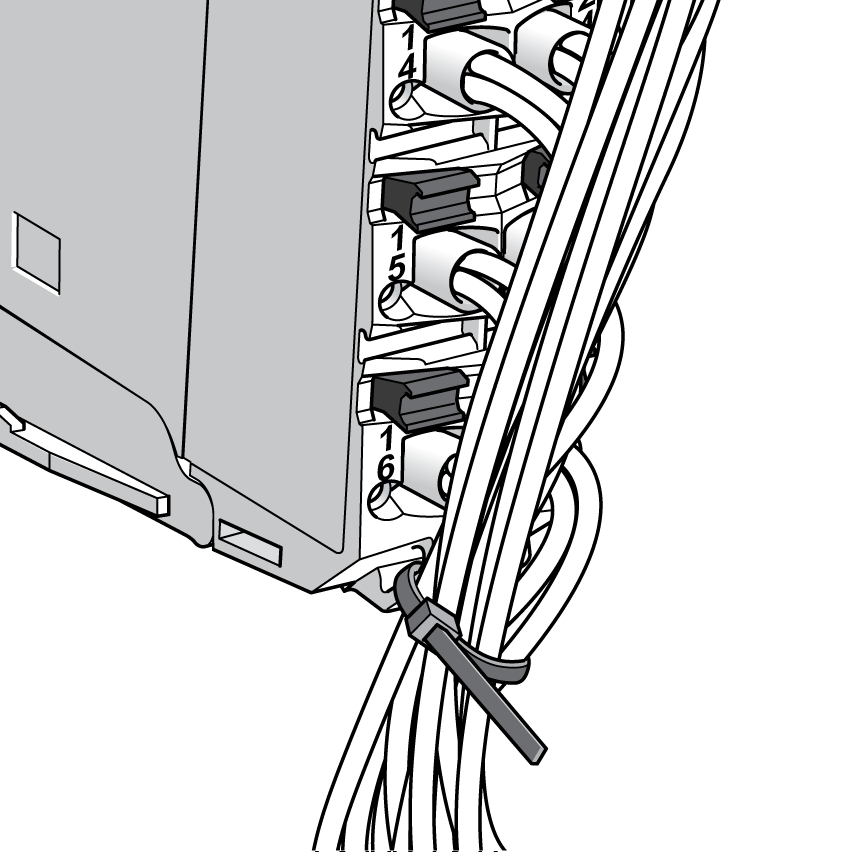
|
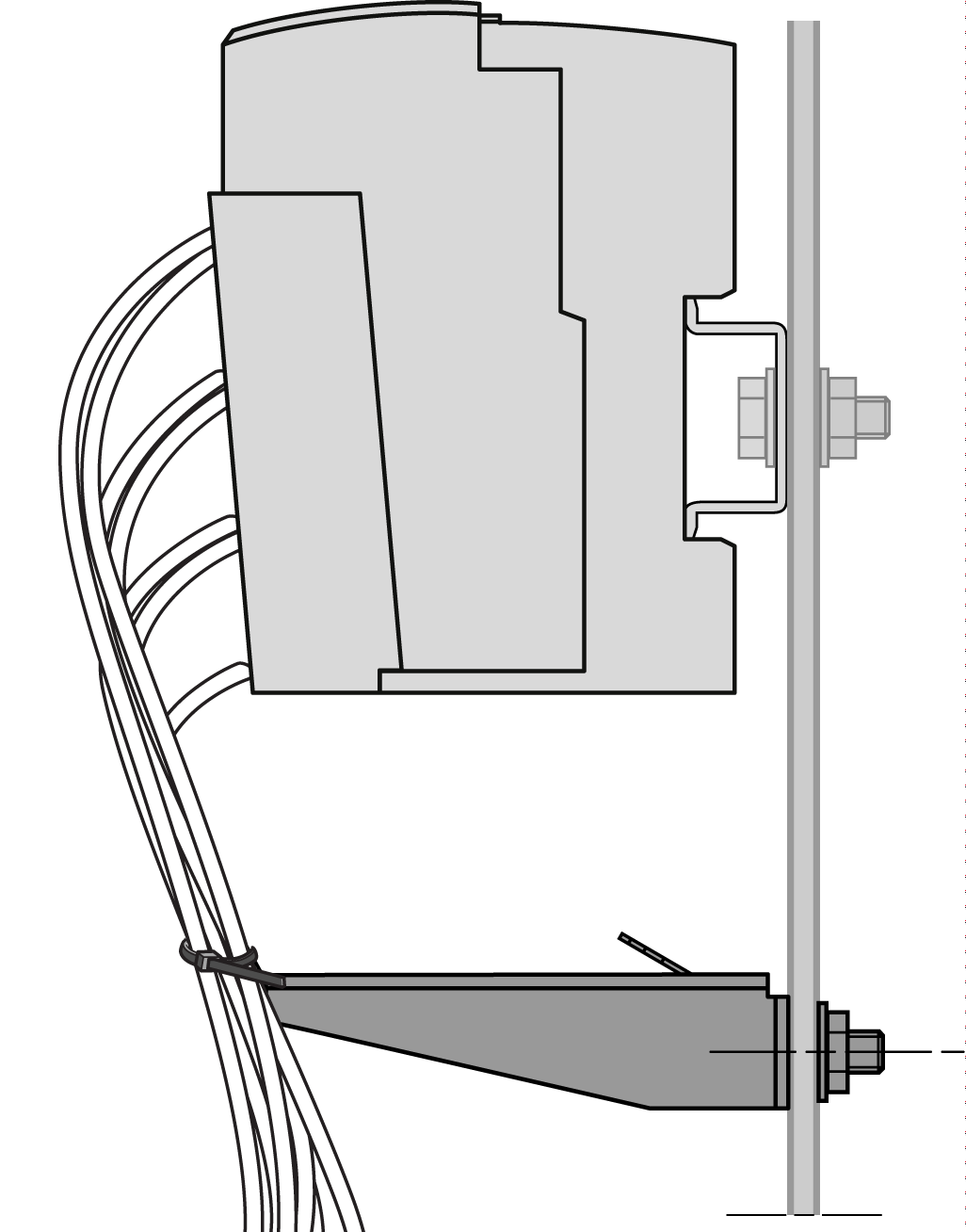
|
| WARNING | |
|---|---|
Protecting Outputs from Inductive Load Damage
Depending on the load, a protection circuit may be needed for the outputs on the controllers and certain modules. Inductive loads using DC voltages may create voltage reflections resulting in overshoot that will damage or shorten the life of output devices.
| WARNING | |
|---|---|
If your controller or module contains relay outputs, these types of outputs can support up to 240 Vac. Inductive damage to these types of outputs can result in welded contacts and loss of control. Each inductive load must include a protection device such as a peak limiter, RC circuit or flyback diode. Capacitive loads are not supported by these relays.
| WARNING | |
|---|---|
Protective circuit A: this protection circuit can be used for both AC and DC load power circuits.
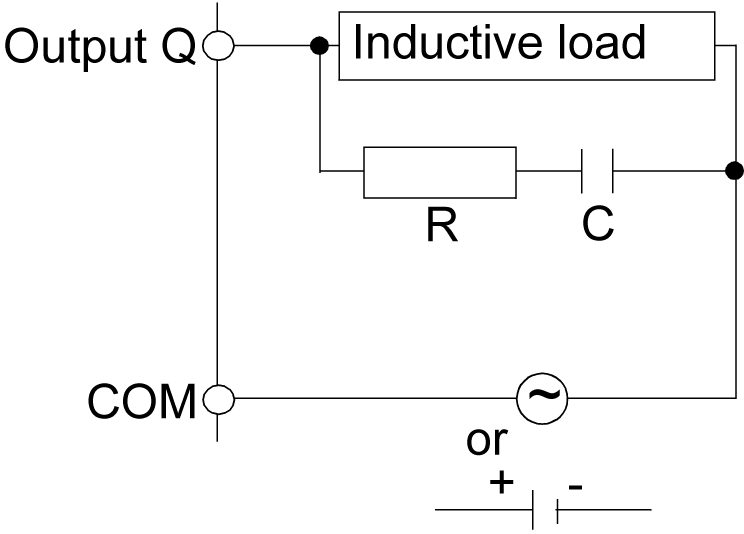
C Value from 0.1 to 1 μF
R Resistor of approximately the same resistance value as the load
Protective circuit B: this protection circuit can be used for DC load power circuits.
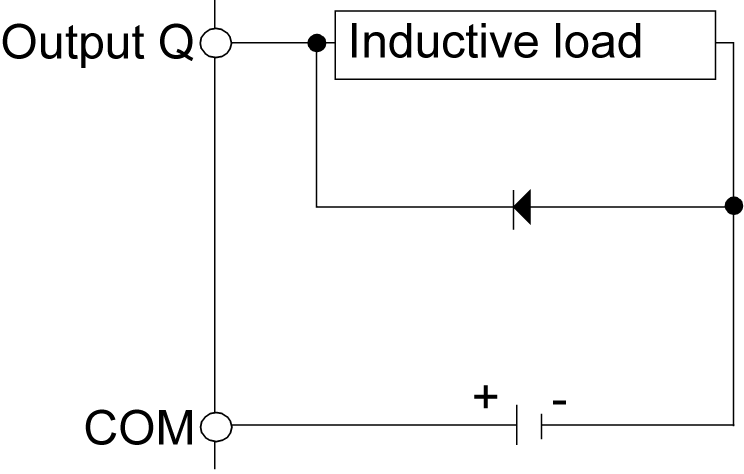
Use a diode with the following ratings:
-
Reverse withstand voltage: power voltage of the load circuit x10.
-
Forward current: more than the load current.
Protective circuit C: this protection circuit can be used for both AC and DC load power circuits.
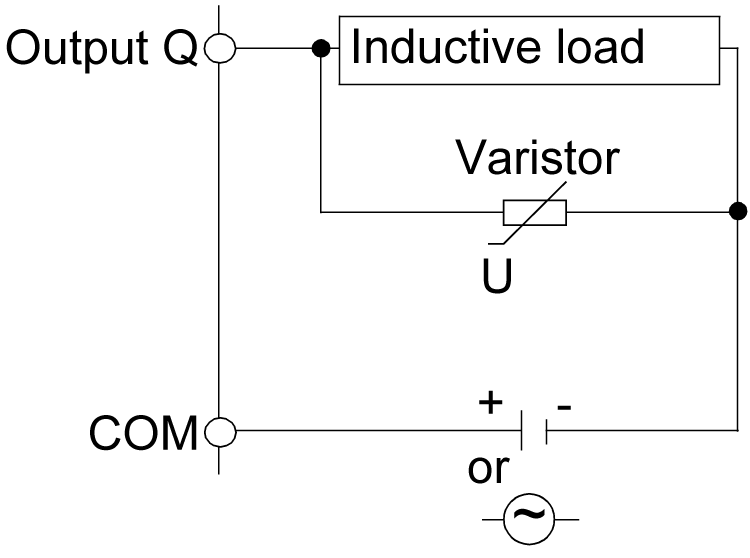
In applications where the inductive load is switched on and off frequently and/or rapidly, ensure that the continuous energy rating (J) of the varistor exceeds the peak load energy by 20 % or more.